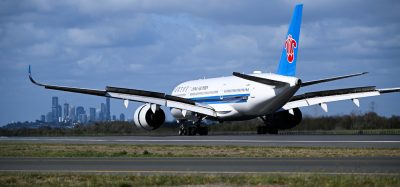Reconnecting Canada to the world post coronavirus
- Like
- Digg
- Del
- Tumblr
- VKontakte
- Buffer
- Love This
- Odnoklassniki
- Meneame
- Blogger
- Amazon
- Yahoo Mail
- Gmail
- AOL
- Newsvine
- HackerNews
- Evernote
- MySpace
- Mail.ru
- Viadeo
- Line
- Comments
- Yummly
- SMS
- Viber
- Telegram
- Subscribe
- Skype
- Facebook Messenger
- Kakao
- LiveJournal
- Yammer
- Edgar
- Fintel
- Mix
- Instapaper
- Copy Link
Posted: 6 May 2020 | Daniel-Robert Gooch | No comments yet
Daniel-Robert Gooch, President of Canadian Airports Council, details the impacts Canadian aviation has felt during the COVID-19 crisis, and what is required for the region’s recovery.


Airports are essential to the economic health of every country and Canada is no exception. With our large land mass, scattered population and 65 per cent of our GDP coming from international trade, airports may be even more essential to Canada than to some other nations.
Our current airport ownership and governance model is a made-in-Canada hybrid. The federal government retains ownership of the majority of airports, but ceded operations and planning are the responsibility of locally-based not-for-profit authorities, who are also responsible for covering their own operating and capital costs. These authorities take direction from boards of directors that are appointed by local and federal entities to reflect and represent the community. The federal government retains regulatory oversight.
Our airports are expected to deliver the same high operational safety and health standards despite the almost complete erosion of income
Moreover, 21 airports pay over $400 million in rent to Canada’s federal government, which is a tax on revenue, with the largest four paying 85 per cent of the total rent remitted and an additional four airports paying most of the rest.
For the most part, this model has been a success, despite income lost to rent payments and therefore unavailable to fund airport enhancements. Passenger growth has been on a steady rise, especially since 2008, and over the last quarter century, airports have reinvested more than $27 billion of their earnings into capital infrastructure and service improvement projects. About 160 million people travelled through Canadian airports in 2019.
That all changed with COVID-19. Like many other countries, we lost about 90 per cent of our air traffic virtually overnight – and an almost equivalent amount in revenue. Capital projects are frozen and layoffs have begun.
At the same time, airports are still supporting essential flights, such as cargo or emergency and medical services, and are expected to deliver the same high operational safety and health standards despite the almost complete erosion of income.
The relief is welcome but literally does nothing for most of Canada’s commercial airports to replace the cash flow needed
The government has provided relief to some airports in the form of temporary rent forgiveness, but with the vast majority of Canadian airports’ cash flow relying almost exclusively on user-based fees, as helpful as this is, rent relief is not a subsidy – it only forgives payments. The relief is welcome but literally does nothing for most of Canada’s commercial airports to replace the cash flow needed to pay the bills and keep their facilities functioning. Unfortunately, federal programmes, such as a 75 per cent wage subsidy to businesses may not even apply to many airports because of how they are structured.
Canada’s airports are working to clarify their eligibility for government support as a matter of urgency and in the longer term, to create a more complete relief and recovery package that would include:
- Confirmation that airports would be eligible for all federal subsidies, programmes and grants available to Canadian businesses and not-for-profits
- Additional short and longer-term relief mechanisms, such as loans or loan guarantees and cash injections for particularly vulnerable airports to support ongoing operations on vastly reduced revenue
- Delayed implementation of non-COVID-19 related regulations and a pool of funding airports can access to finance the implementation of regulations and programmes that support mandated new accessibility, safety and environmental investments in terminals and on-airport property.
As well as working with the government and airlines on solutions at home, we are also working with our colleagues at airports around the world to build an international recovery strategy. Through ACI-North America, the Canadian Airports Council (CAC) is participating in high-level and in-depth discussions with ACI World, which is coordinating the airport community’s international response and guidance to rebuild trust in the travel process and strengthen passenger confidence, working with a number of groups such as World Travel and Tourism Council (WTTC), ATAG and the ICAO task force on COVID-19. Areas that are currently under discussion involve recommissioning of terminal building sections or entire terminals; working with tenants to reactivate tenant space and systems, including training of employees and other measures.
CAC and ACI-NA will continue to work with ACI World as we find solutions to facilitate our economic recovery and allow our airports – and people – to reconnect and rebuild.
Biography
Daniel-Robert Gooch serves as President of the Canadian Airports Council (CAC). He was previously the CAC’s Director of Communications and Policy.
As CAC President, Gooch oversees operations of ACI-NA’s Canadian division, leads Canadian government affairs and communications, and coordinates policy and regulatory efforts to effectively advance the airport industry within Canada. He serves as the committee secretary to the CAC Large Airport Caucus. Gooch has more than 16 years’ experience in marketing, public relations and publishing, particularly in the aviation and technology sectors.
Related topics
Aeronautical revenue, Airport crisis management, COVID-19, Economy, Regulation and Legislation

















